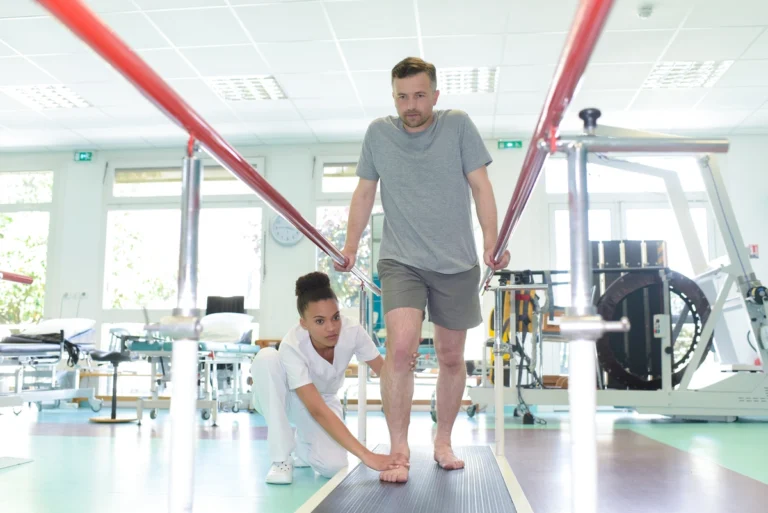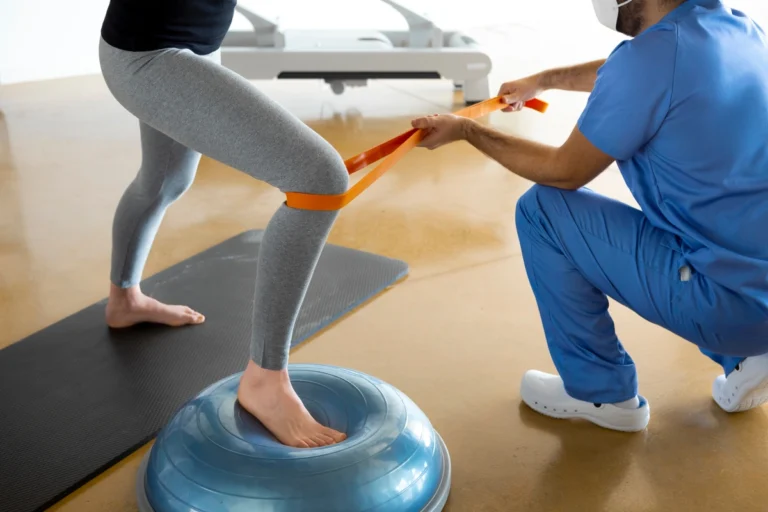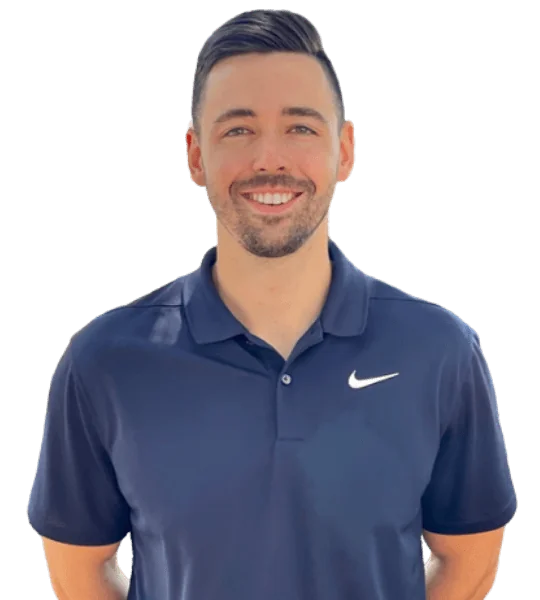
If you’ve torn your ACL, you’re probably wondering what comes next. Whether you’re heading toward surgery or trying to avoid it, ACL physical therapy plays a massive role in getting you back to the activities you love. The good news? With the right approach to ACL rehabilitation, most people can return to running, playing sports, and living without that nagging fear of their knee giving out.
Let’s walk through what ACL recovery actually looks like and how physical therapy fits into both your pre-surgery prep and post-surgery comeback.
What Is ACL Physical Therapy?
ACL physical therapy is specialized rehabilitation designed to restore strength, stability, and function to your knee after an ACL injury. Think of it as the foundation for everything else. Whether you’re preparing for ACL surgery or physical therapy or working to avoid surgery altogether, PT addresses the root problems that an ACL injury creates: weakness, instability, and compensatory movement patterns that can lead to re-injury.
The focus isn’t just on your knee. Your entire lower body needs attention. ACL rehabilitation targets your quadriceps, hamstrings, glutes, and core because these muscles work together to stabilize your knee during the movements that matter most: cutting, pivoting, jumping, and quick direction changes. When one link in this chain weakens, your knee compensates in ways that increase injury risk.
How Does ACL Rehabilitation Help Your Recovery?
ACL rehabilitation does three critical things. First, it reduces swelling and restores your knee’s range of motion, which is essential whether you’re heading into surgery or not. Second, it rebuilds the strength you’ve lost, particularly in your quadriceps. Research shows that having stronger quadriceps before and after surgery significantly improves functional outcomes and reduces re-injury risk. Third, it retrains your neuromuscular control so your body learns how to protect your knee during athletic movements.
Here’s the thing most people don’t realize: your brain needs to relearn how to coordinate movement around your injured knee. ACL injury exercises aren’t just about getting stronger. They’re about teaching your nervous system to fire the right muscles at the right time. That’s what separates adequate recovery from getting back to your true athletic potential. The difference shows up when you’re making that quick cut on the basketball court or landing from a jump during a volleyball game.
Do You Need Physical Therapy Before ACL Surgery?
Absolutely. Pre-operative ACL rehab phases set you up for a faster, more complete recovery. Studies show that patients who complete 4-6 weeks of prehabilitation before surgery show better strength, range of motion, and return-to-sport outcomes compared to those who skip this step. Think of it as building the best possible foundation before reconstruction.
Many people assume they should just rest and wait for surgery. That’s a mistake. Your knee starts losing strength and stability immediately after injury. The longer you wait without intervention, the more ground you have to make up after surgery. Prehabilitation stops that decline and often reverses it, giving you a head start on the recovery process.
What Happens During Pre-Operative ACL Rehab?
Pre-operative ACL therapy focuses on getting your knee as close to normal as possible before surgery. You’ll work on reducing any remaining swelling, restoring a full range of motion (especially knee extension), and rebuilding quadriceps strength. Research indicates that achieving 90% quadriceps and hamstring strength before surgery improves two-year outcomes.
Your physical therapist will also address balance, proprioception, and functional movement patterns. This isn’t passive stretching. You’ll do progressive strength training, neuromuscular exercises, and movement drills that prepare both your body and your mind for what’s coming after surgery. These sessions typically include exercises like single-leg balance work, controlled squatting patterns, and graduated resistance training, challenging your knee without compromising the existing injury. The goal is simple: go into surgery strong, come out of surgery stronger.
What Should You Expect in Post-Operative ACL Physical Therapy?
Post-operative ACL rehab begins within days of surgery and continues for months. The first few weeks focus on managing pain, reducing swelling, and regaining basic knee extension and flexion. You’ll start with gentle range-of-motion exercises and progress to weight-bearing activities as your surgeon and PT determine you’re ready.
As swelling decreases and your incisions heal, the intensity ramps up. You’ll begin strengthening exercises targeting your quadriceps, hamstrings, and hip muscles. This is where the real work happens. Rebuilding the foundation that will support your return to activity means progressively loading your knee through exercises that become increasingly sport-specific. What starts as basic leg lifts evolves into complex movement patterns that mirror the demands of your favorite activities.
How Long Does ACL Recovery Take With Physical Therapy?
Here’s the timeline you need to know: most people need a minimum of 9 months for ACL reconstruction recovery, though some athletes require up to 12 months before they’re ready to return to competitive sports. That’s not arbitrary. It reflects both the biological healing time your graft needs and the progressive conditioning your body requires to handle athletic demands safely.
Athletes who return before 9 months have approximately seven times higher risk of re-injury compared to those who wait. Rushing back isn’t brave, it’s risky. The good news is that working with skilled physical therapists who push you appropriately can optimize your recovery within that timeline. You’re not just marking time; you’re systematically rebuilding your athletic foundation with measurable progress at each stage.
What Are the Different Phases of ACL Rehabilitation?
ACL rehab phases break down into four distinct stages, each with specific goals and criteria you need to meet before progressing. The early phase (weeks 0-6) prioritizes protecting your graft while restoring a range of motion and basic quadriceps function. You’ll focus on reducing swelling, regaining full knee extension, and beginning controlled strengthening. During this phase, your therapist monitors your progress closely to ensure your knee is healing properly while gradually introducing more challenging movements.
The intermediate phase (weeks 6-12) shifts toward progressive strength building. You’ll advance to more challenging exercises, increase resistance, and begin incorporating balance and proprioception work. Walking transitions to jogging, and your movements become more dynamic. This phase is crucial because it bridges the gap between basic function and athletic performance.
The advanced phase (months 3-6) introduces sport-specific training. You’ll work on agility drills, plyometrics, and movements that mimic your target activities. This is where your therapist assesses your readiness for higher-level demands through functional testing. Expect exercises that challenge your knee in multiple planes of movement, simulating the unpredictable nature of sports and active living.
The final phase (months 6-12) prepares you for return to sport after ACL surgery. You’ll perform sport-specific drills at full intensity, demonstrate symmetrical strength and movement patterns, and pass return-to-sport testing protocols before you’re cleared to compete. This phase isn’t just about physical readiness but also building the psychological confidence to trust your knee again during high-demand activities.
Can You Recover From an ACL Tear Without Surgery?
Sometimes, yes. Non-surgical ACL tear treatment works for certain patients, particularly those with partial tears, lower activity demands, or knee stability that’s adequate for their lifestyle. Research shows that conservative treatment can produce functional outcomes comparable to surgery for appropriately selected patients, though it’s important to understand what “appropriately selected” means.
The success of non-surgical treatment depends heavily on your activity goals. If you’re planning to return to cutting, pivoting sports like basketball or soccer, surgery typically offers better stability and lower re-injury risk. But if your goals are more moderate (recreational activities, straight-line running, or gym workouts), comprehensive physical therapy for an ACL tear might be enough.
Keep in mind that about 18-19% of people who initially choose conservative treatment eventually need delayed surgery due to persistent instability. That’s not a failure, it’s valuable information. Starting with aggressive rehabilitation gives you a real-world test of how your knee functions. If it doesn’t hold up to your activity demands, you can proceed to surgery with the benefit of having built a strong foundation through prehabilitation.
Why Choose Bull City PT for Your ACL Recovery?
ACL recovery demands expertise, personalization, and the kind of progressive challenge that makes the difference between getting back to activity and getting back to your best. At Bull City PT, we specialize in motivated, active adults who want to return to the sports and activities they love, not just eliminate pain. Our team understands that your goal isn’t simply to walk without discomfort. You want to play basketball with your friends, run that half-marathon you’ve been training for, or keep up with your kids at the park.
Our approach to ACL surgery, physical therapy, and non-surgical rehabilitation isn’t cookie-cutter. We push you at the right pace, addressing your specific weaknesses and building on your strengths. Whether you’re preparing for surgery, recovering from reconstruction, or exploring conservative treatment, you’ll work with therapists who understand the demands of athletic movement and the psychology of rehabilitation. We’ve helped countless active adults navigate the frustration of injury and the challenge of comeback, and we know what it takes to get you across the finish line.
As two-time winners of Best of the Triangle, we’ve built our reputation on better outcomes and an elevated patient experience. You won’t need a referral thanks to Direct Access, and we offer flexible scheduling across our Durham, Brier Creek, Cary, and Charlotte locations. Ready to start your ACL rehabilitation with experts who’ll help you get back to what you love? Schedule your appointment today, and let’s build your comeback together.






